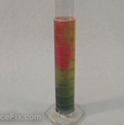Video Demo: Conservation of Mass
 Wednesday, April 21, 2010 at 12:35PM
Wednesday, April 21, 2010 at 12:35PM
How the heck do you teach the conservation of mass to 8th grade students? Lab activities are always good, but what lab activity can be done without the students getting super confused? Two components are required. First, a chemical reaction is needed. It must use simple chemicals, and it should be obvious that a chemical reaction took place. Second, it must be easily quantifiable. In other words the mass is easy to measure and it must show very clearly that mass was not lost during the chemical reaction. I think I may have finally developed a lab activity that addresses both components. Watch the video and download the student worksheet for more details.





